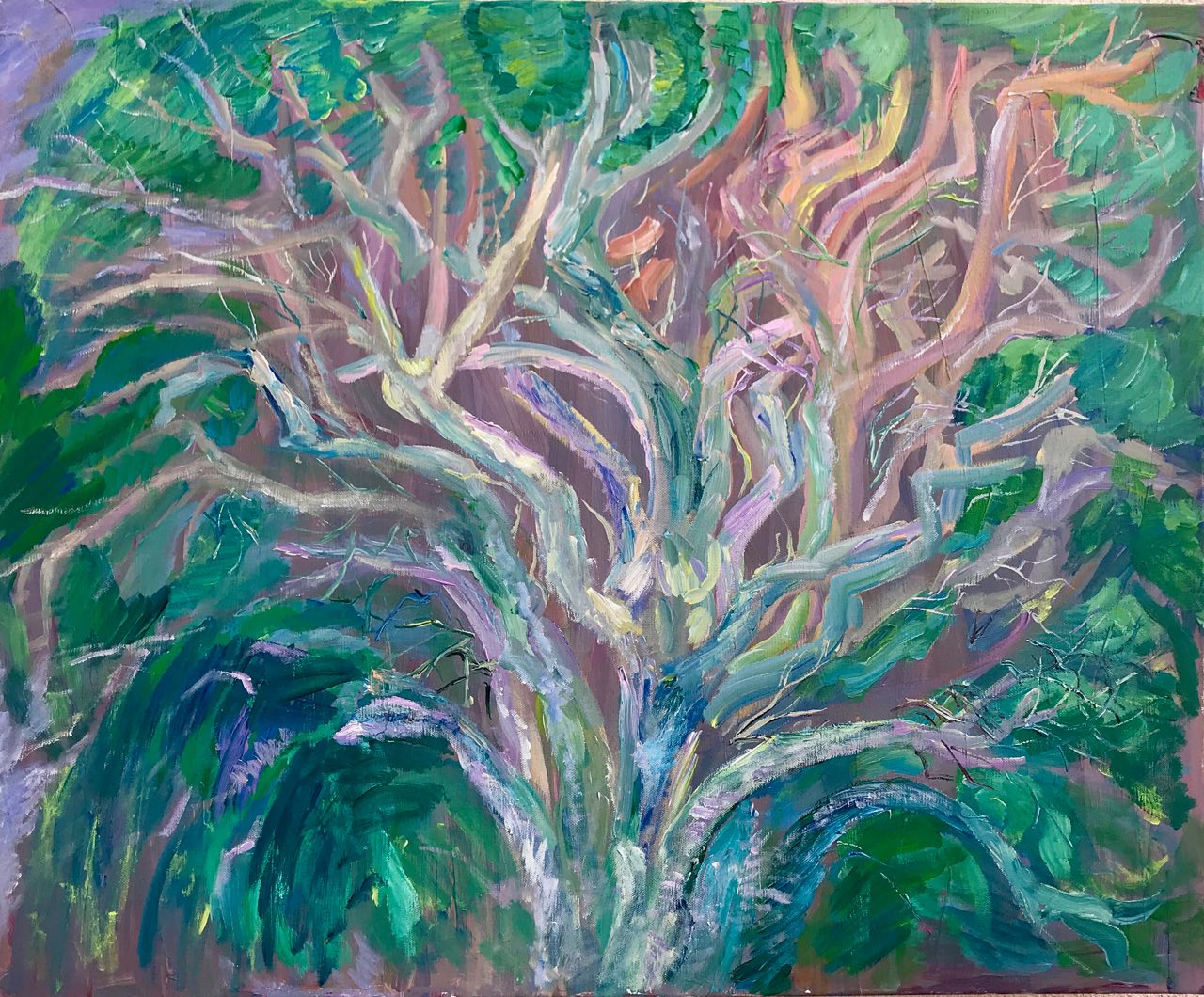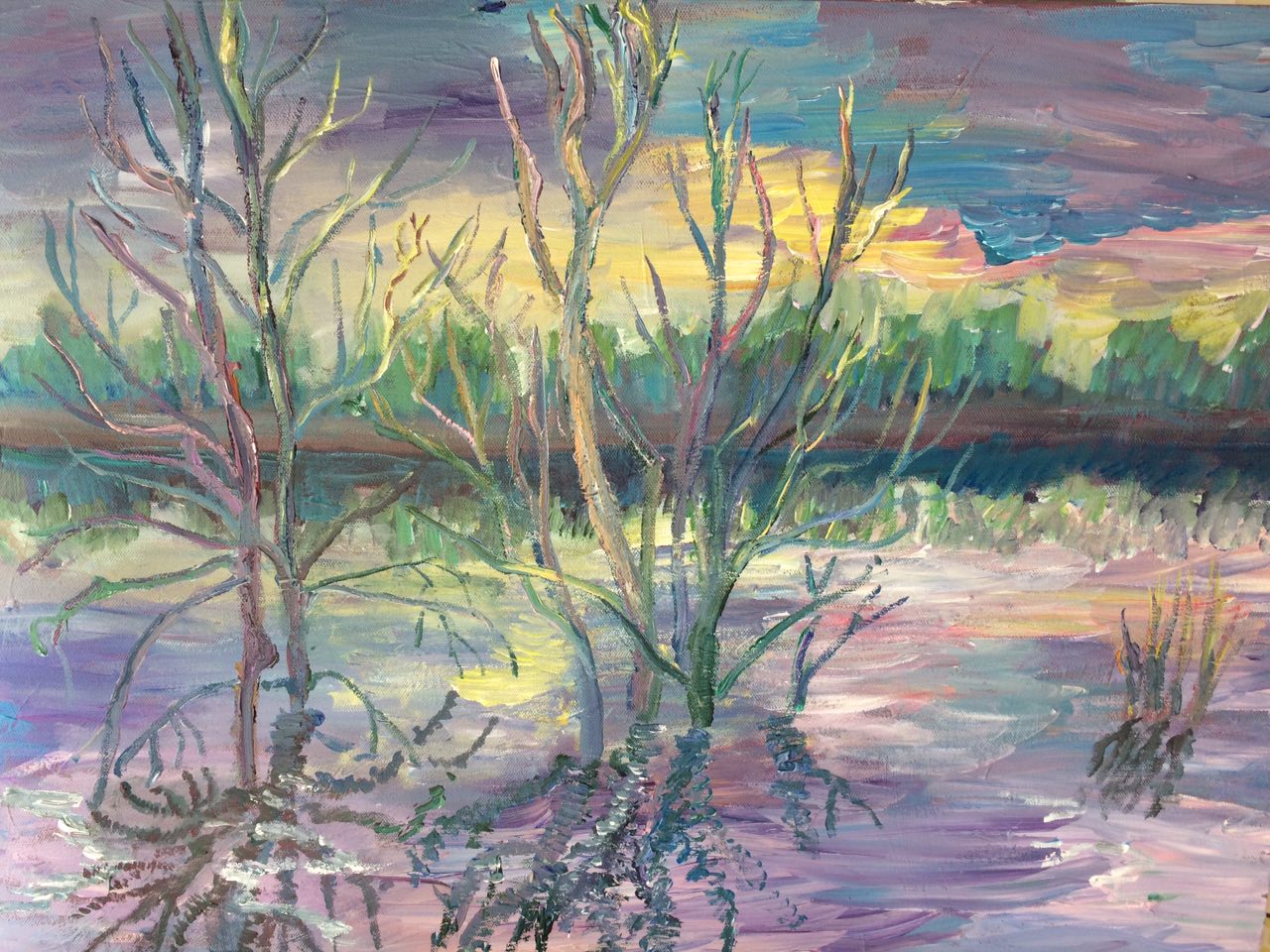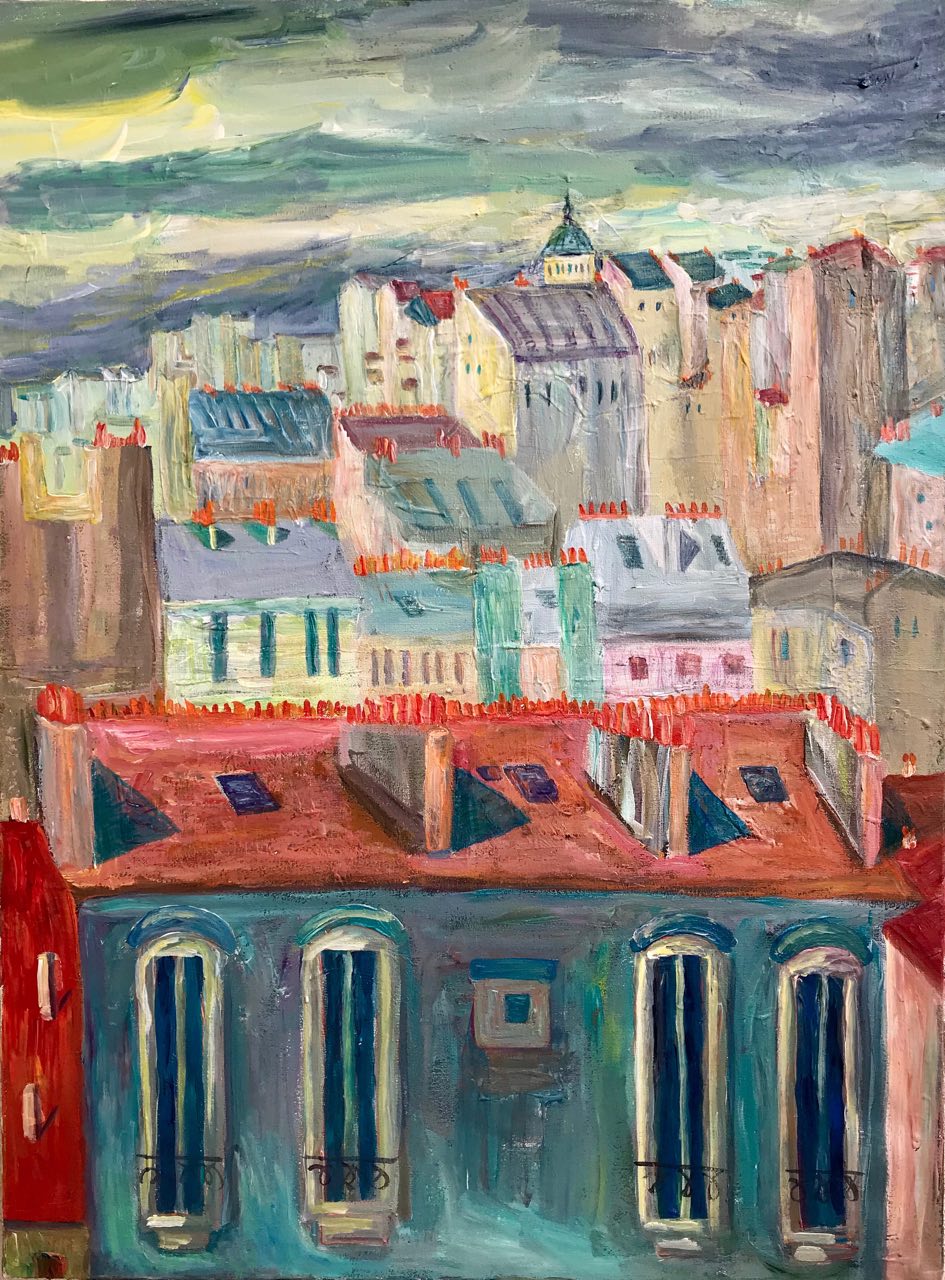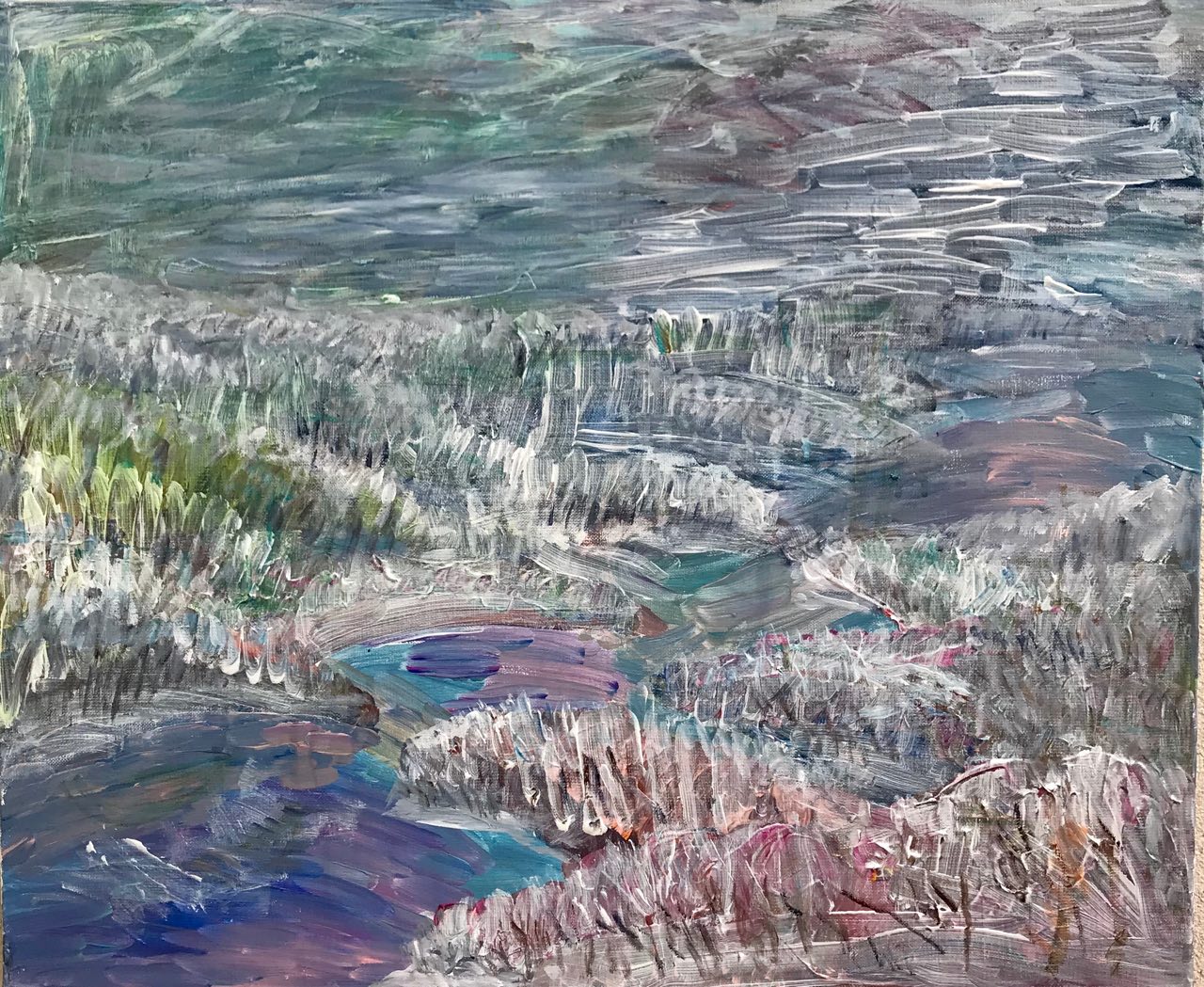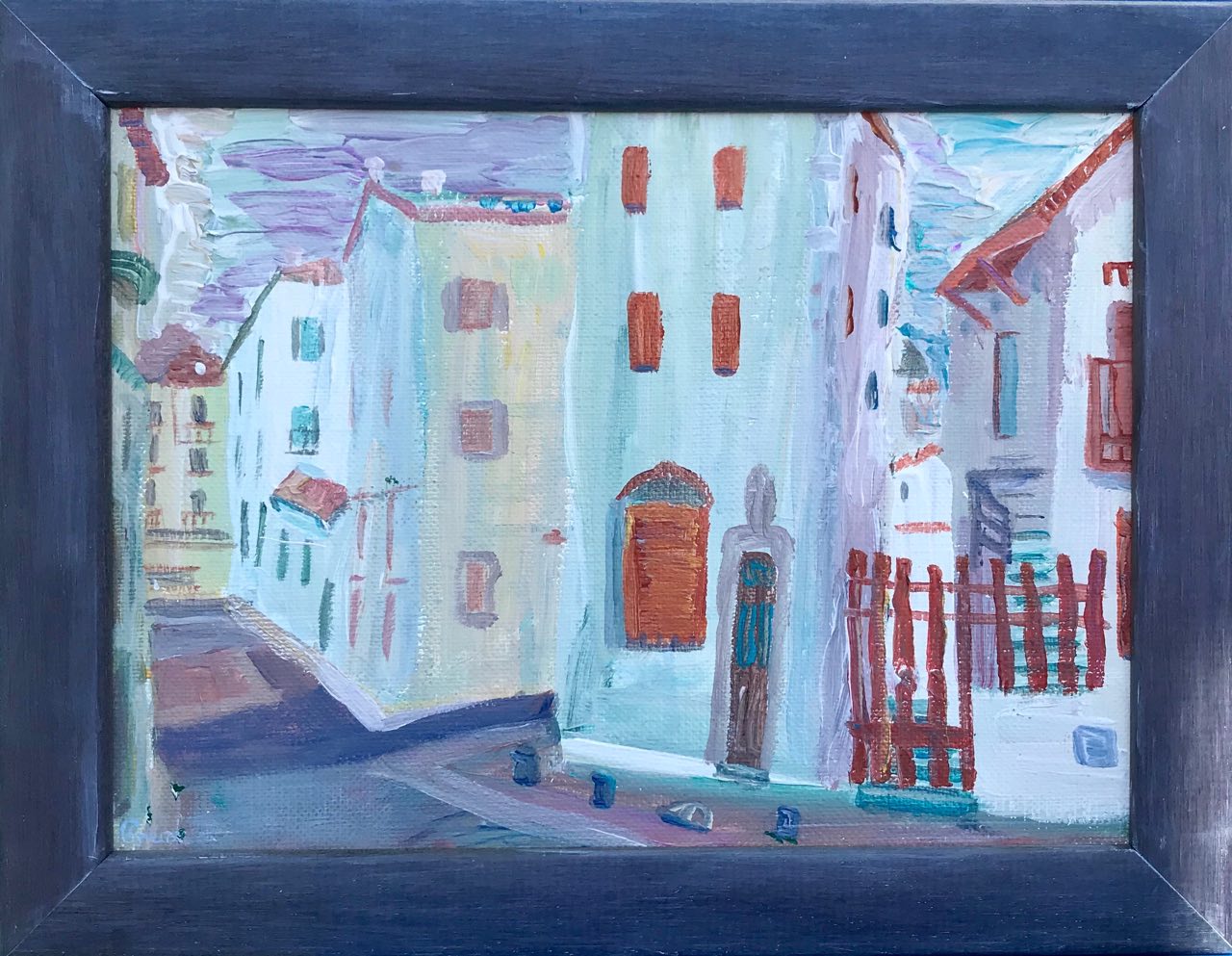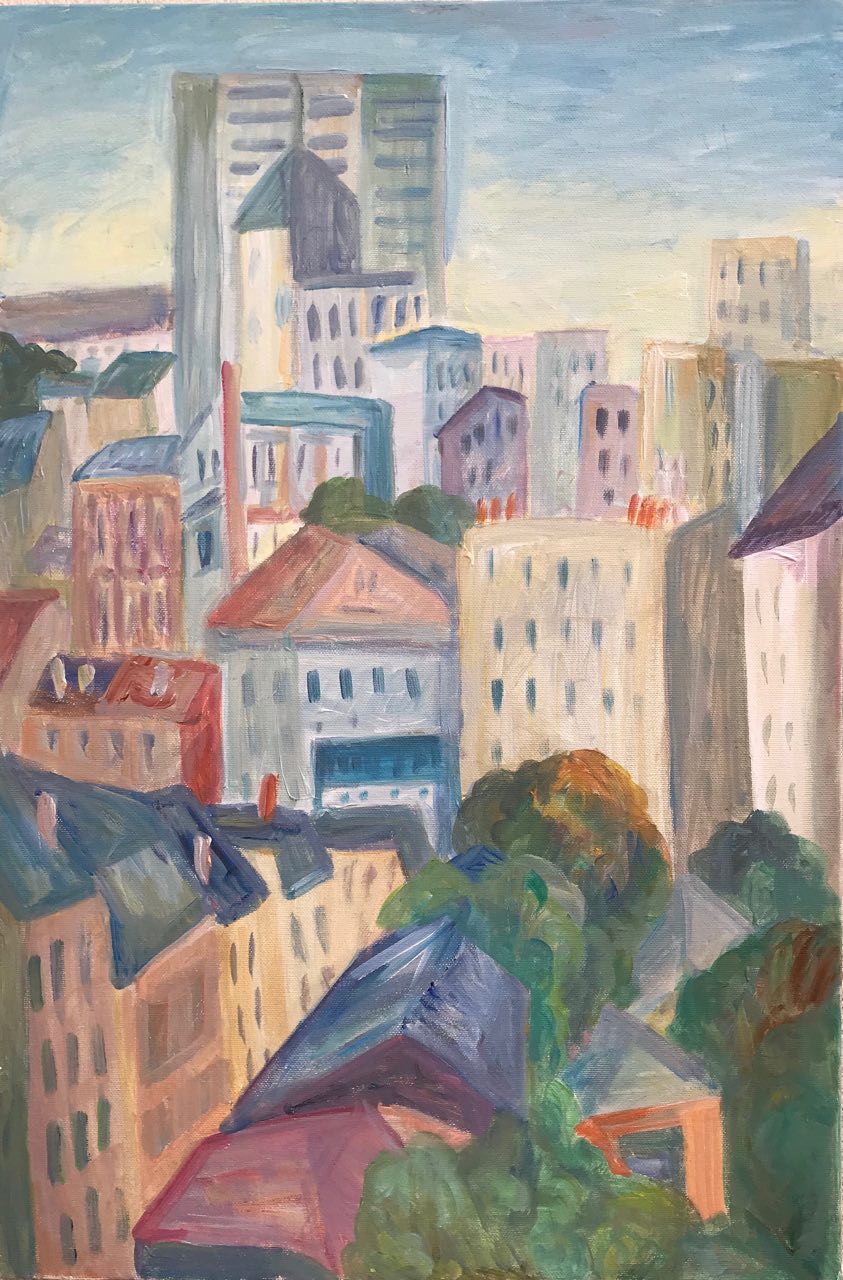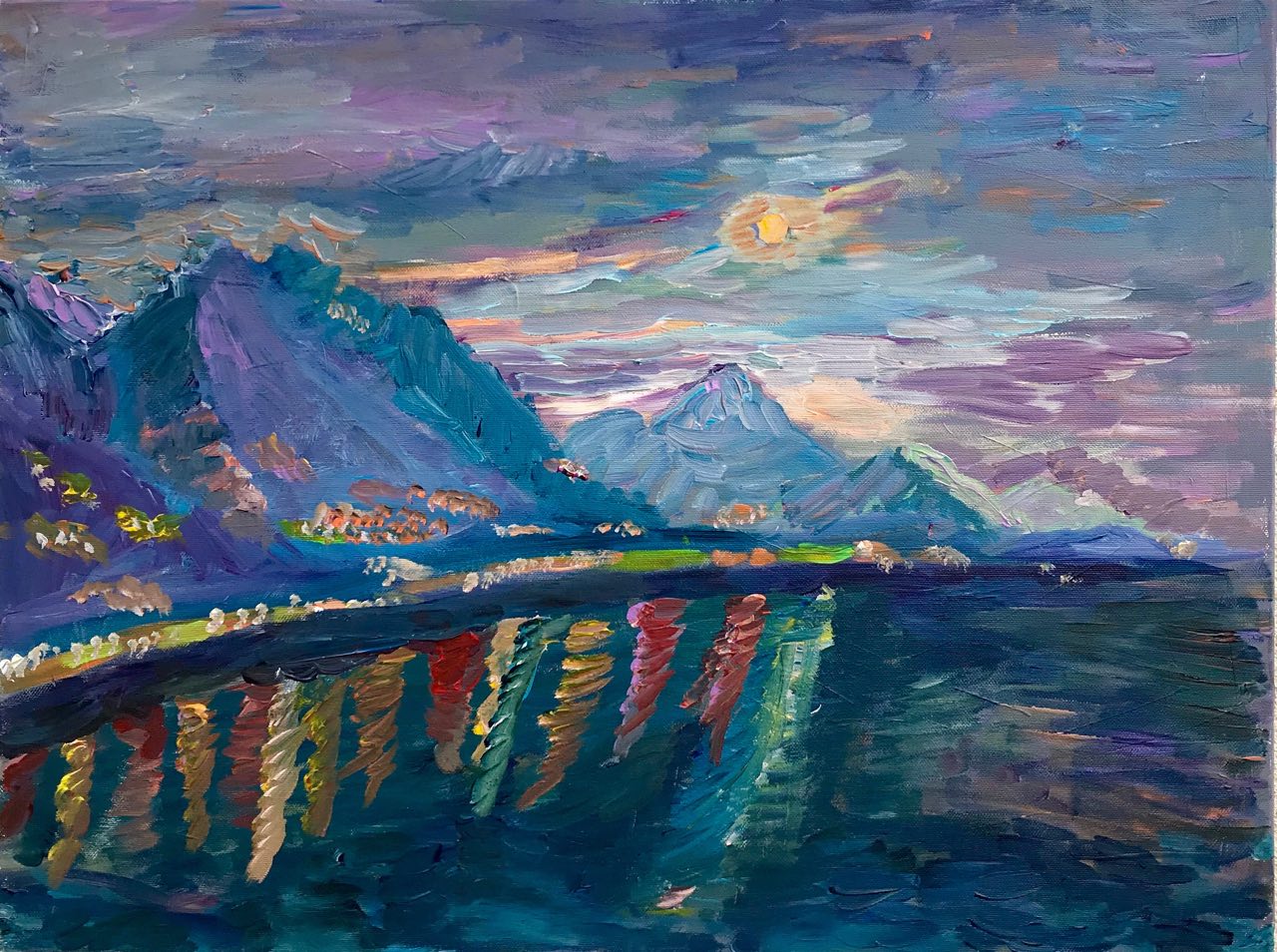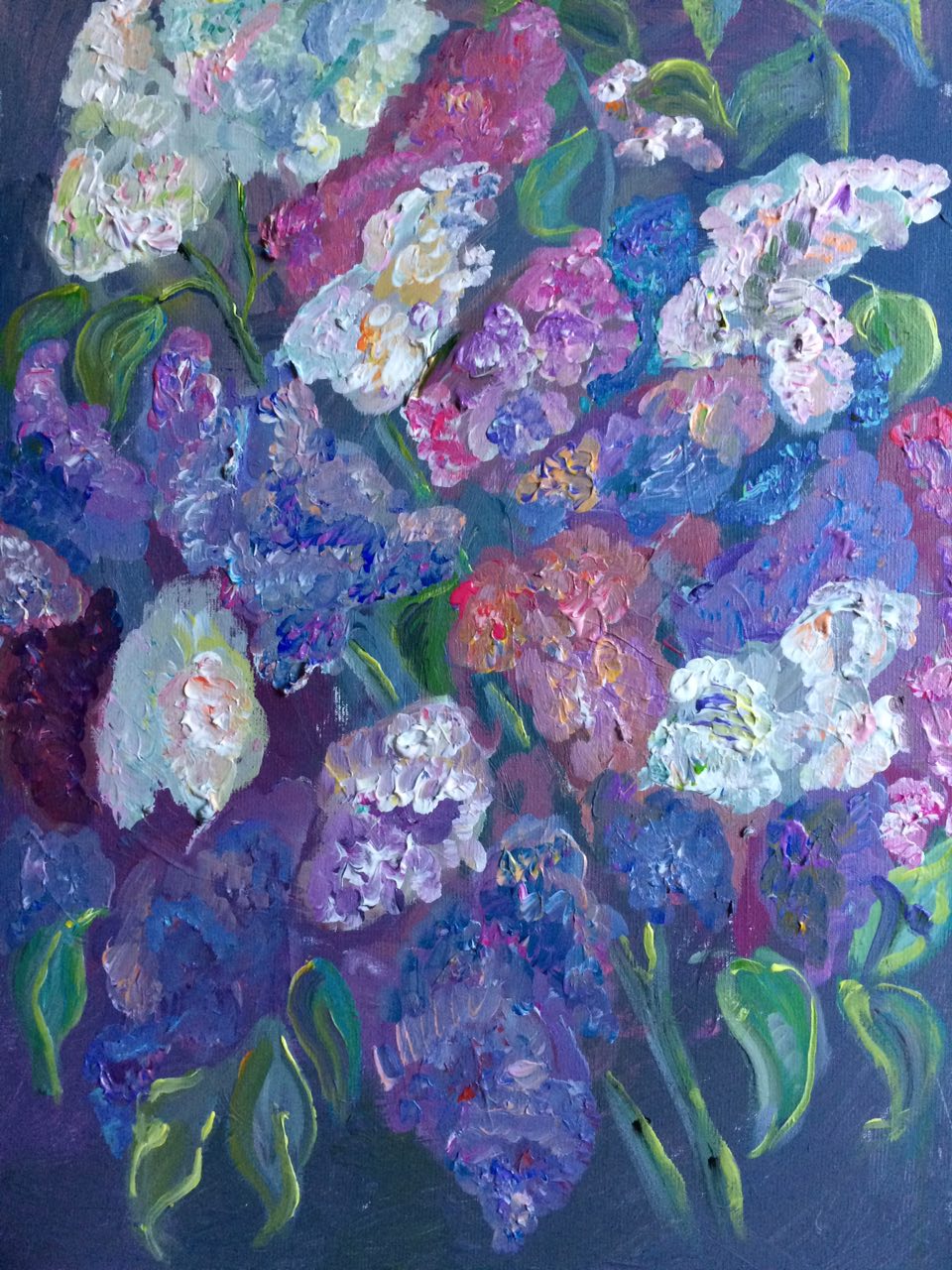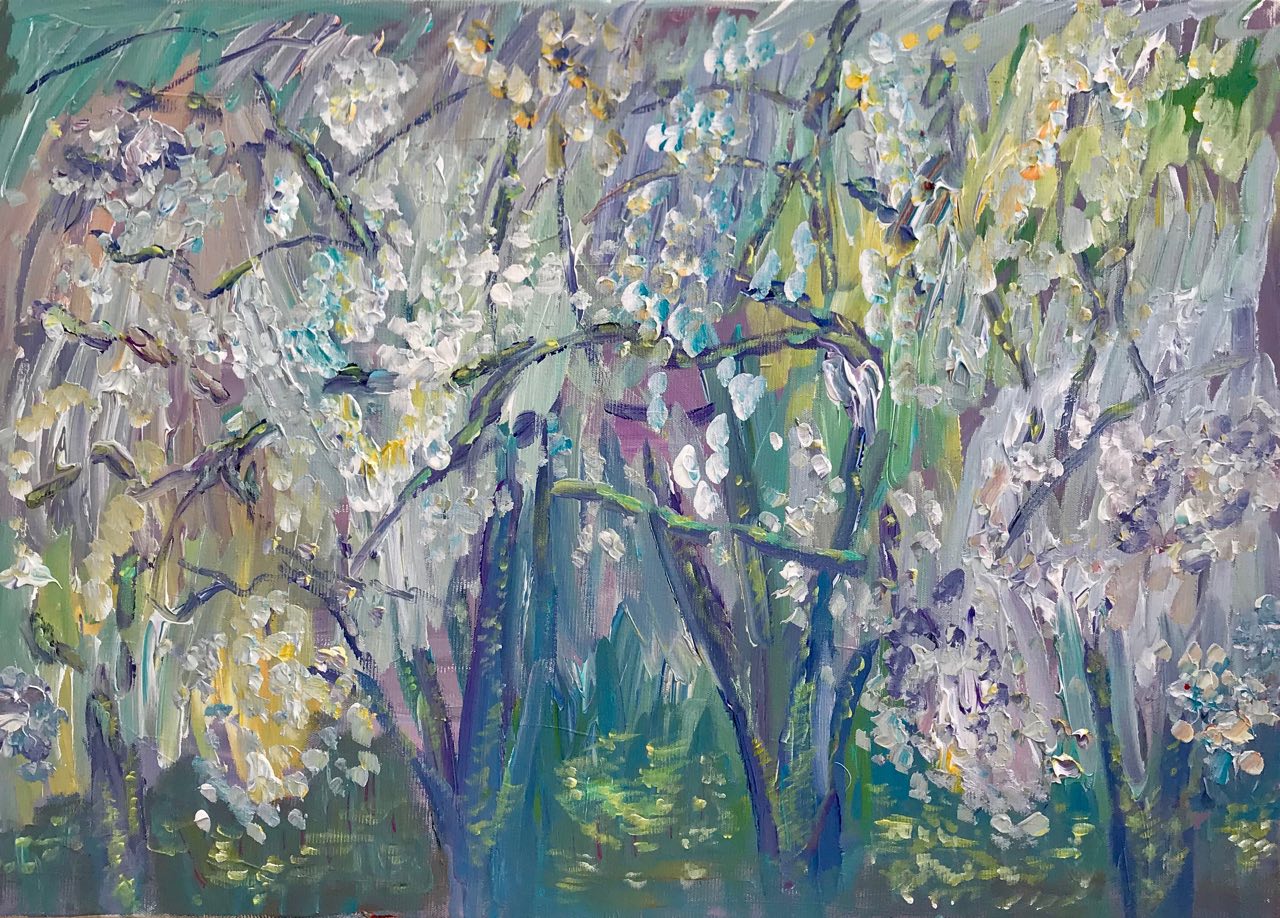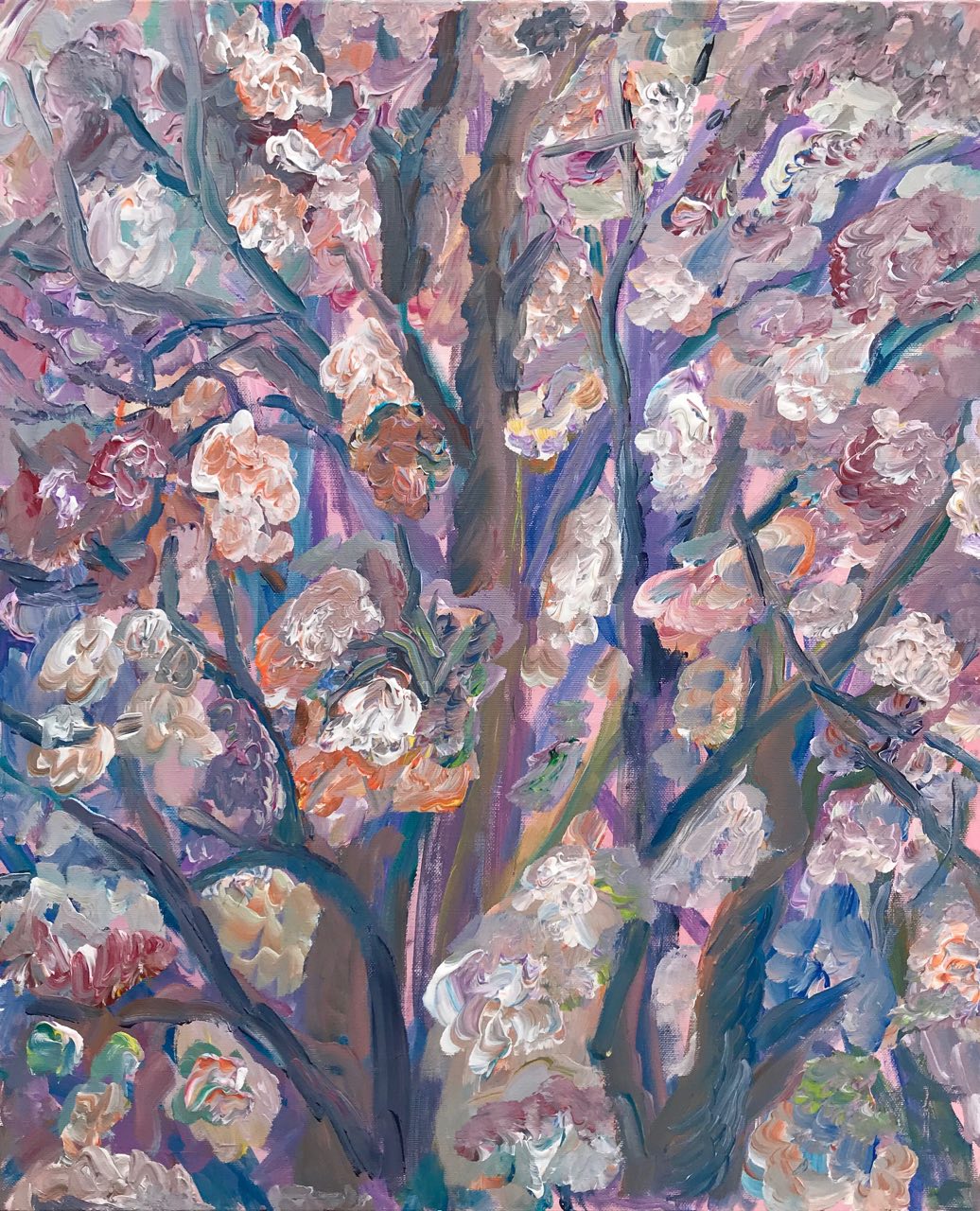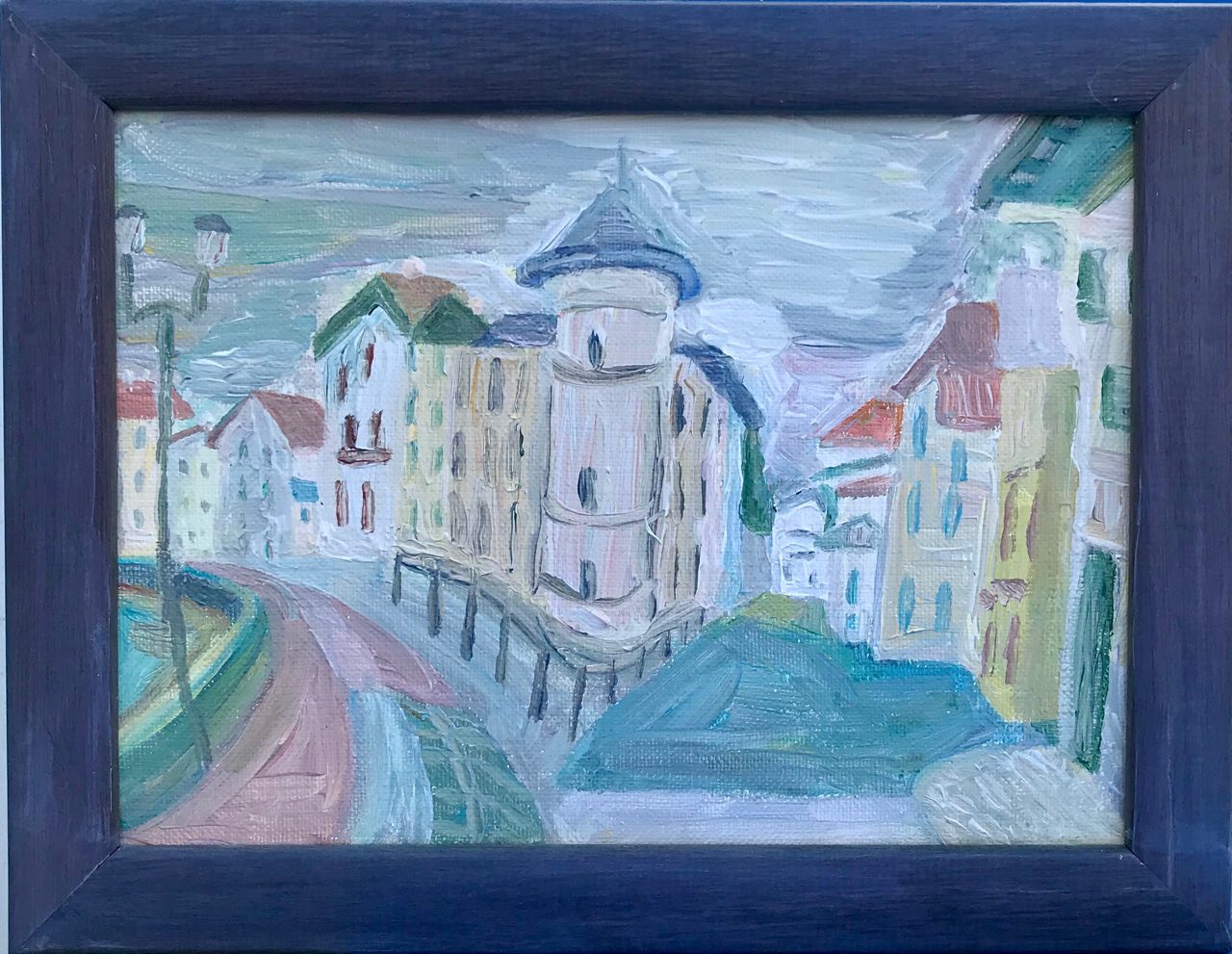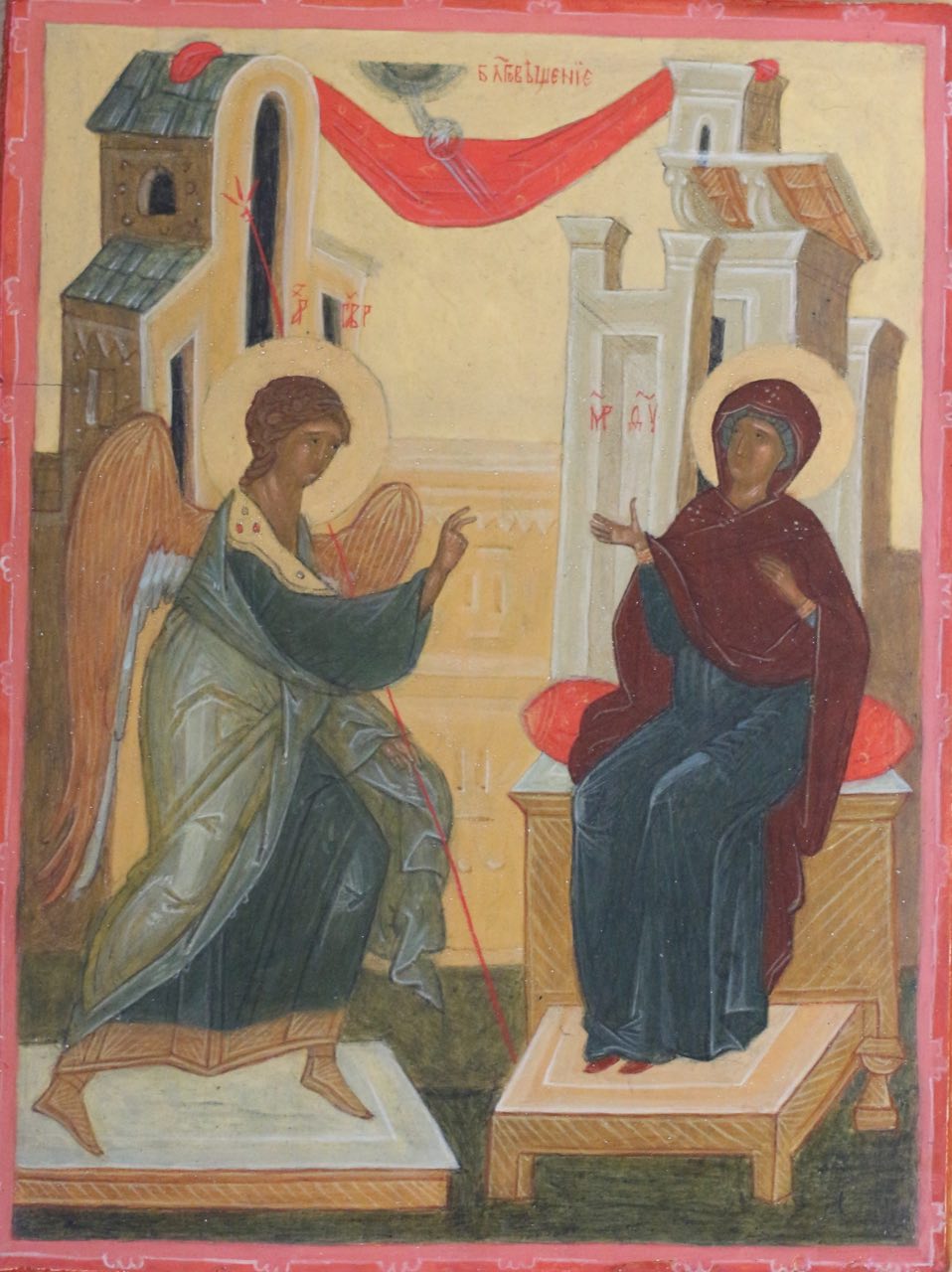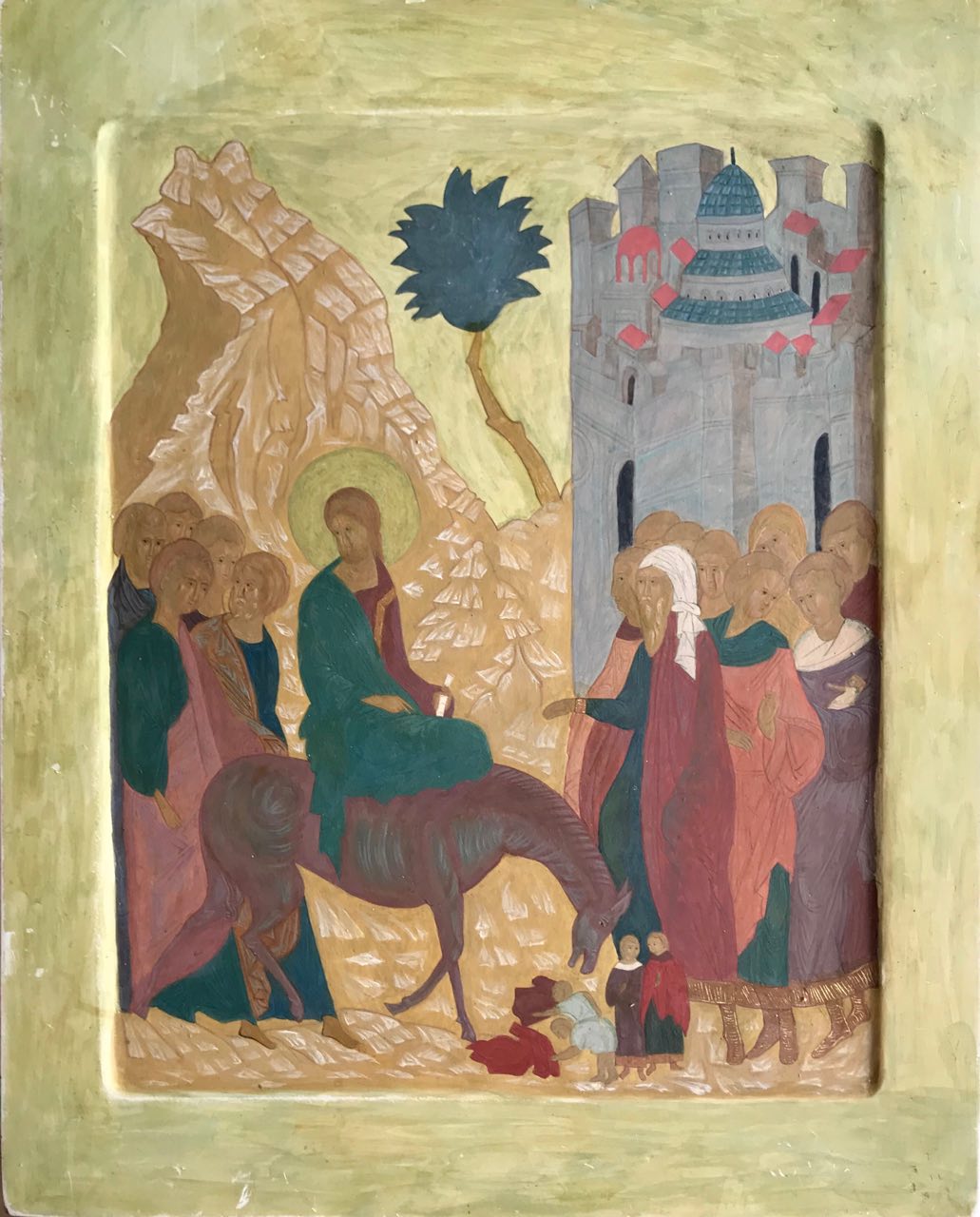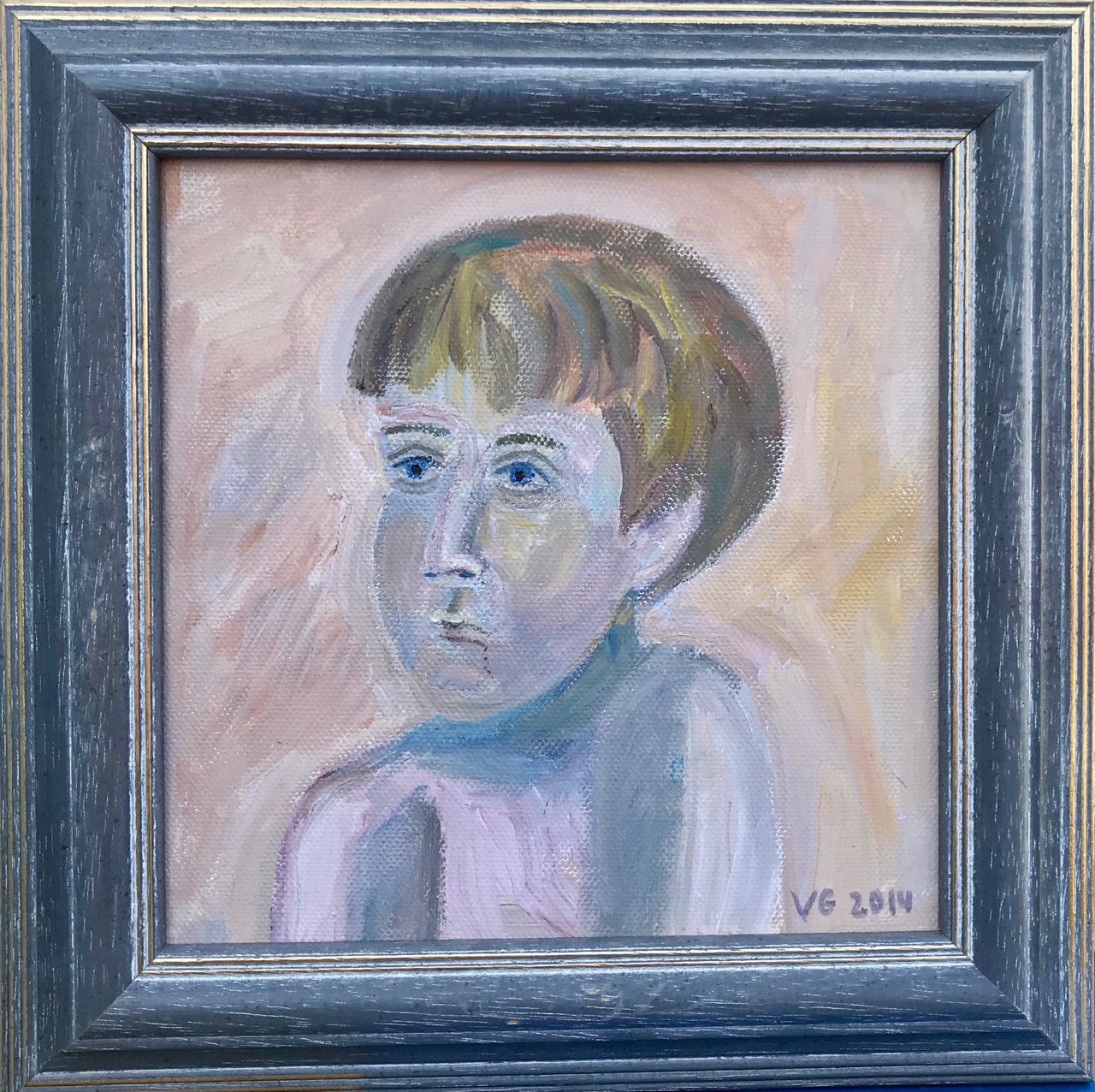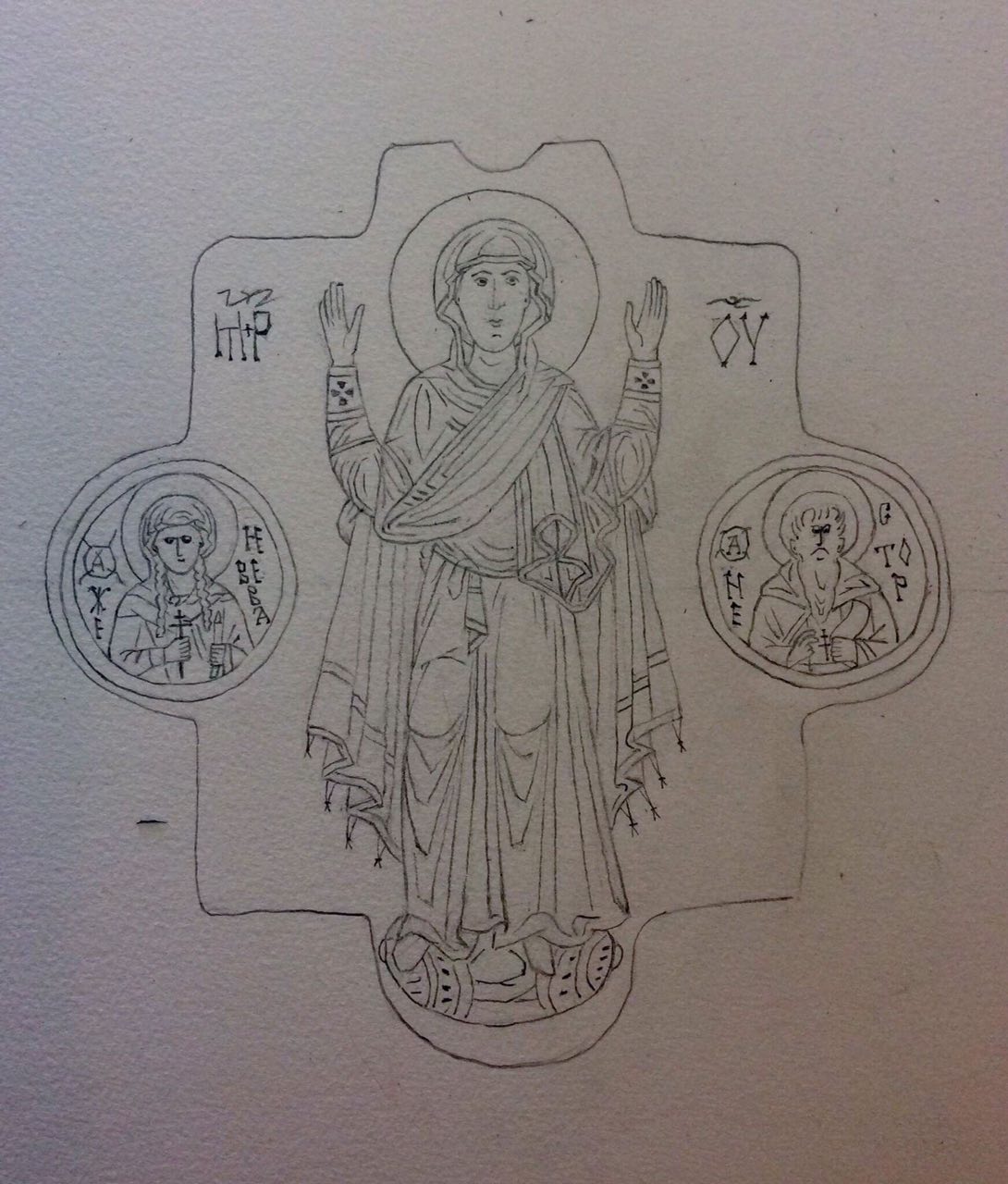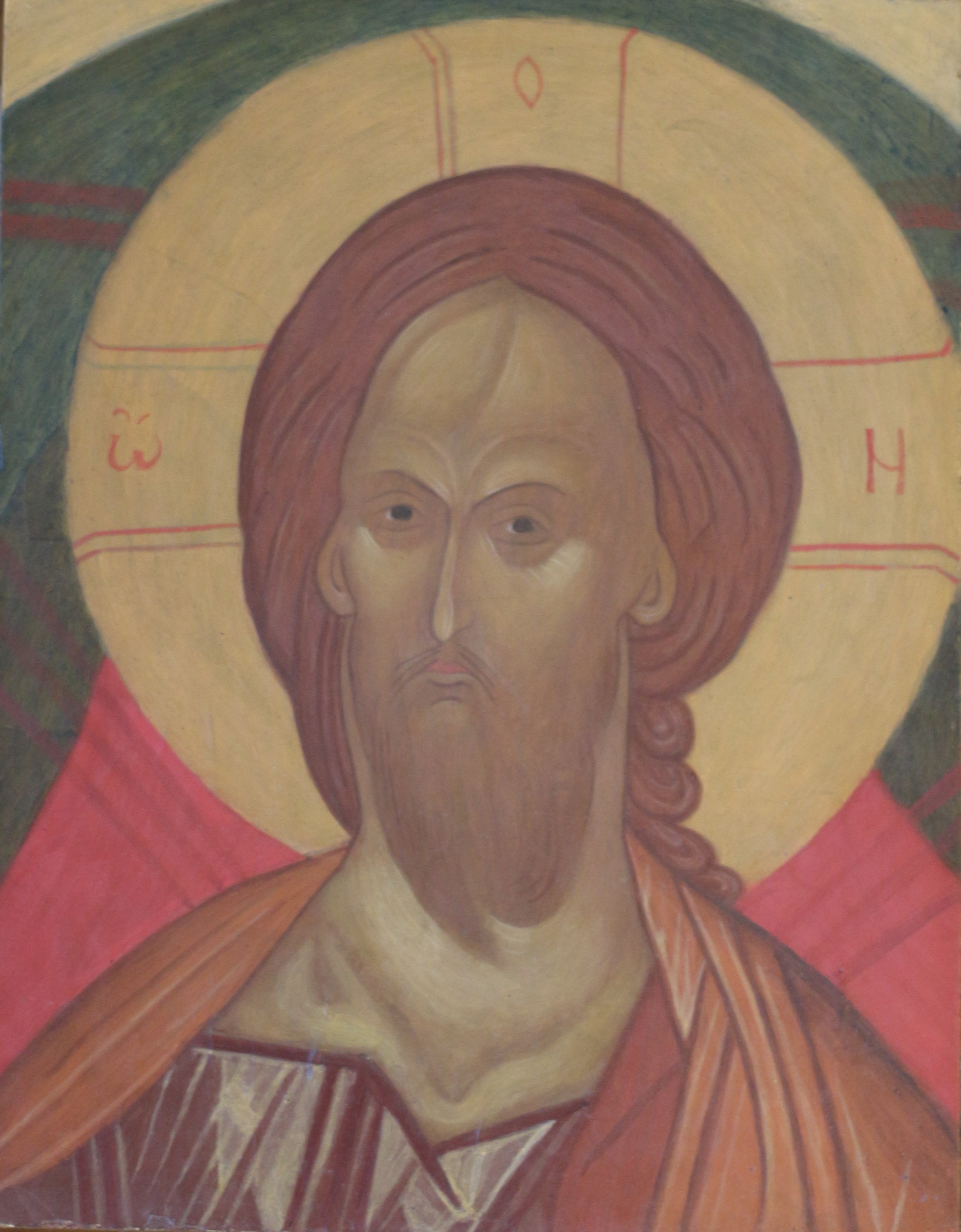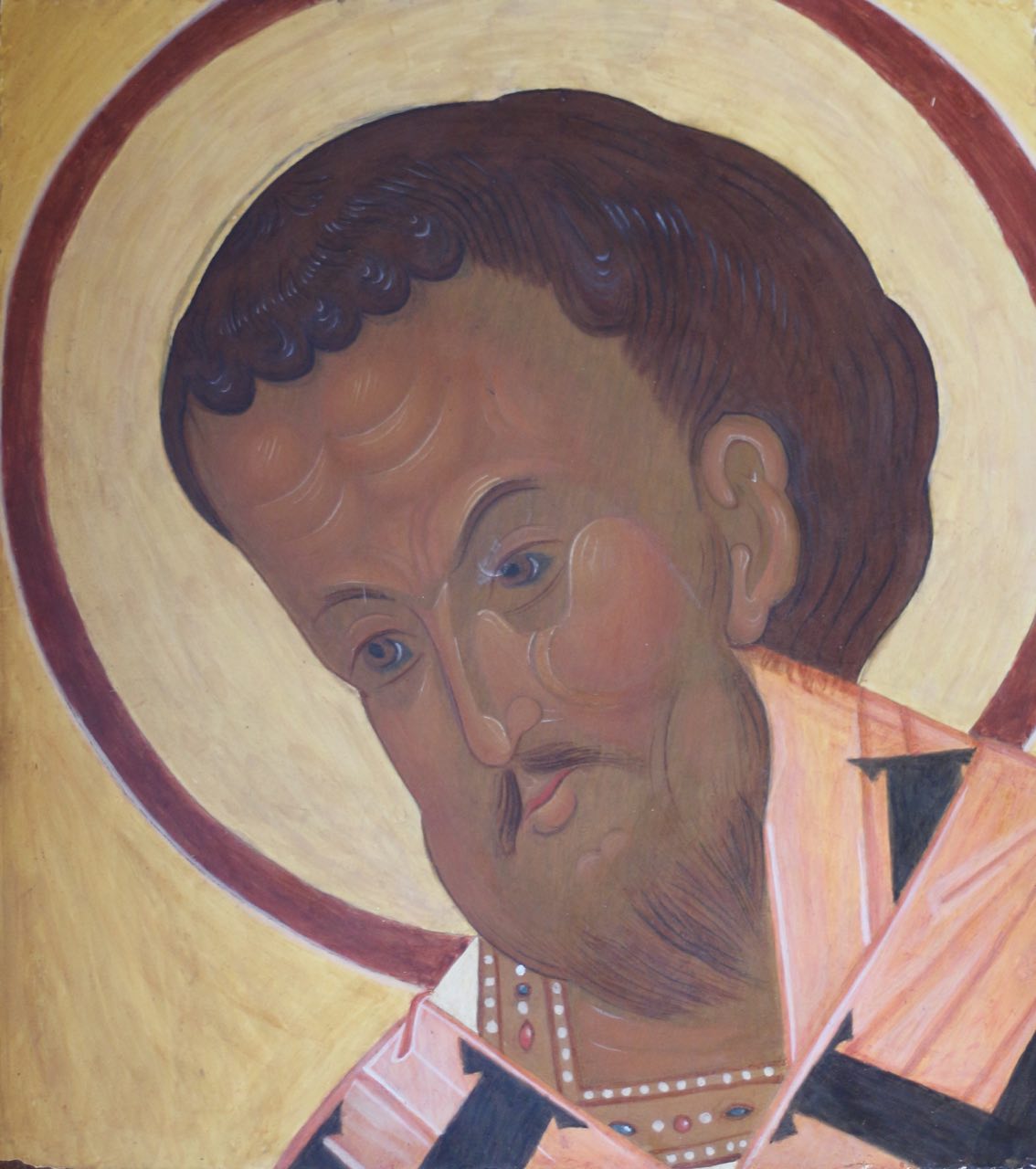Interview with Varvara Gnucheva
Could you, please, introduce yourself and tell us how you became an artist?
I was born into a family, which has been related to the high arts for many years. In fact, I belong to the same family as Alexandre Benois, Evgeny Lanceray, and Zinaida Serebryakova. These artists made a significant contribution to the artistic heritage of France and Russia.
I started painting when I was a child. I would paint the still lifes of the objects arranged by my mother, or the landscapes of the places, where she would bring me. My grandfather, Ivan Nikolayev, was officially honoured as a painter of the Russian Federation for his sculptures. He would teach me that a work becomes a piece of art when it is animated by the force of the human spirit. There is a joke in our family: “all those who do not want to paint and try themselves elsewhere, eventually, come back to painting”.
At the age of 14, I started attending artists’ studios and preparing myself to studying at an art institute by practicing drawing and painting. The atmosphere at those studios was extremely inspiring. Each time we would meet, we would show each other the works we did outside the studio: some sketches made on the metro, at school or outdoors. It was indeed very exciting, and I continue to keep in touch with my mentors. I particularly value the fact that they share their experience with me.
After finishing high school, I went to study at the oldest Russian school of icon painting. I was tremendously eager to understand the mysteries of the Old Russian painting, its language of movements and colours, to understand how the religious ideas were expressed through painting, how the colours were put into a mutual game, creating the effect of shining gems. Up until now gems extracted by geologists are used in icon painting. For example, such semi-precious minerals as azurite and lazurite are used as a base for the blue colour. At the School of Icon Painting of the Holy Trinity-St. Sergius Lavra, where I studied, they offered us a possibility to copy the icons exposed in the museums. That was a really unique opportunity to feel closer to the true beauty, to comprehend the thoughts of the old masters through lines and colours. Working in the museums, I started to perceive that painting has its instruments, that in order to reach sincerity in a work, it is necessary to respect deep tones when structuring the range of the colours used. The tones in panting are as the notes in music. Deep tones are similar to low pitched musical notes, and they make the painting more powerful in its expression. The artist is free to use his or her magic as regards the warm and cold tones of an oeuvre, keeping in mind that warm colours would shine like gems if a cold colour is applied on the top of them.
How would you describe yourself and your artwork?
I suppose as the bow and arrows. The paintings are arrows, while my creative energy is the bow. I want to reach the human soul, so to awake in it joy for the sun shining through the trees, the touches of frost, the sunset. These minor things are worth enjoying in order to feel the life in its fullness. The artist has a great opportunity to make it happen, to see the beauty and show it to others.
What does inspire you?
As my icon painting teacher used to say, “you are truly professional when you take a paintbrush and the inspiration is at your service; if you wait for inspiration to come, you are an amateur, not a professional”. I get inspired by travelling, by returning to my favourite museums, by visiting exhibitions. I like to observe my friends’ creative search. We often discuss our works. It is always enriching. I love watching old trees and admire their solidly beautiful trunks, which, resisting the winds, become so puzzling. I also love mountains and the sea, through which you can feel the origins of the very existence.
What are your emotions when people watch your art works?
I feel happy that I can share beauty that I see around me. Primarily, my paintings and icons are about the joy of existence. I also feel awe, since I open my heart, so the creation would come from the deeps of my soul. I always feel some trepidation, asking myself whether I managed to make people perceive what I wanted to express. When the same people order me a second or a third work, I feel really great!
How do you know that a work is complete?
In painting, there are such concepts, or instruments, as space, depth, foreground and background. When I understand that I employed all of them, that my work has a meaning, that I expressed my ideas and perceptions through it, I consider the work complete.
What was the most exciting moment in your artistic career?
I guess the most exciting moment was when I decided to become a painter, and not a writer or a physicist, when I was conquered by the power of colours and began to reflect on better ways to express the beauty of this world using a paintbrush. I do not perceive my career as going up the stairs, but rather as stringing beads: I complete a work for a customer, who brings it back home, where his or her guests can see it and would request me to paint another piece of art for them. Or I participate in an exhibition, and other projects come up.
When I am working on something, I am totally immersed in this work. When the work is complete and goes to the client, it starts its new life, and it attracts new clients.
How long does it take to complete a work?
It largely depends on the work’s characteristics. Icons require a lot of preparations: a sketch in colours, a pencil drawing, followed by the ink one, then first colouring (when you apply the basic colours). You also have to model the clothes, how the lights and shadows would follow the bodylines. Then, you paint the faces. It may take months, sometimes a year. After a while, no one would remember whether it took you a day or a year, but the work will remain, as well as its quality and the joy it involves. You might be stuck at a certain point, cease to hear the music of your work. You should then put it on hold and reflect on it. Some works can be done in a few hours, in one sitting, as for example a painting of a sea tempest.
What are the projects you are working on now? Can you share some of your future plans with us?
Now, I am working on a series of icons for the new Russian orthodox cathedral in Paris. This projects is particularly interesting for me because I have to follow the example of the icons by Andrei Rublev, which are the touchstone in the Old Russian painting, such as his worldwide famous icon of the Trinity, exposed in the Tretyakov Gallery in Moscow.
Andrei Rublev’s paintings are multi-layered, though they give an impression that they were painted in one stroke. The range of colours is very tender, though the painting as a whole is quite contrastive. All the movements are painted magnificently. Presently, such masterpieces are rarely used as models because they are difficult to follow. Hence, this is my professional challenge. I have to be extremely creative, to find out how to apply colours and shadows, notably on the clothes. Indeed, because of the time elapsed, a lot of techniques are lost.
Obviously, I continue to work on paintings. This gives me strength to face all the everyday tasks.
What are the next events or exhibitions we should be aware of?
I try to participate in various exhibitions and competitions. My next participation is in Art San-Diego, which will be held from October 28 to October 1st, 2017. I am presenting there five of my works. In November, I’ll take part in the Mantova International Biennial of Contemporary Art, Italy. On December 1st-3rd, 2017, I’ll be at Art Shopping, in Cannes, France. From December 18, 2017 to January 6, 2018, my works will be exposed in the Parisian gallery Metanoia, within the framework of the exhibition Un seul grain de riz. I shall also take part in Spectrum Miami (December 6-10, 2017) and Artexpo New York in April 2018.
How do you see your art in five years?
My works are in private collections. I strongly hope that in five years people will continue to buy them, so to give joy to them and their loved ones. The beauty is eternal. In our imperfect world, one should aim at perfection, and the art works would then open new opportunities.


